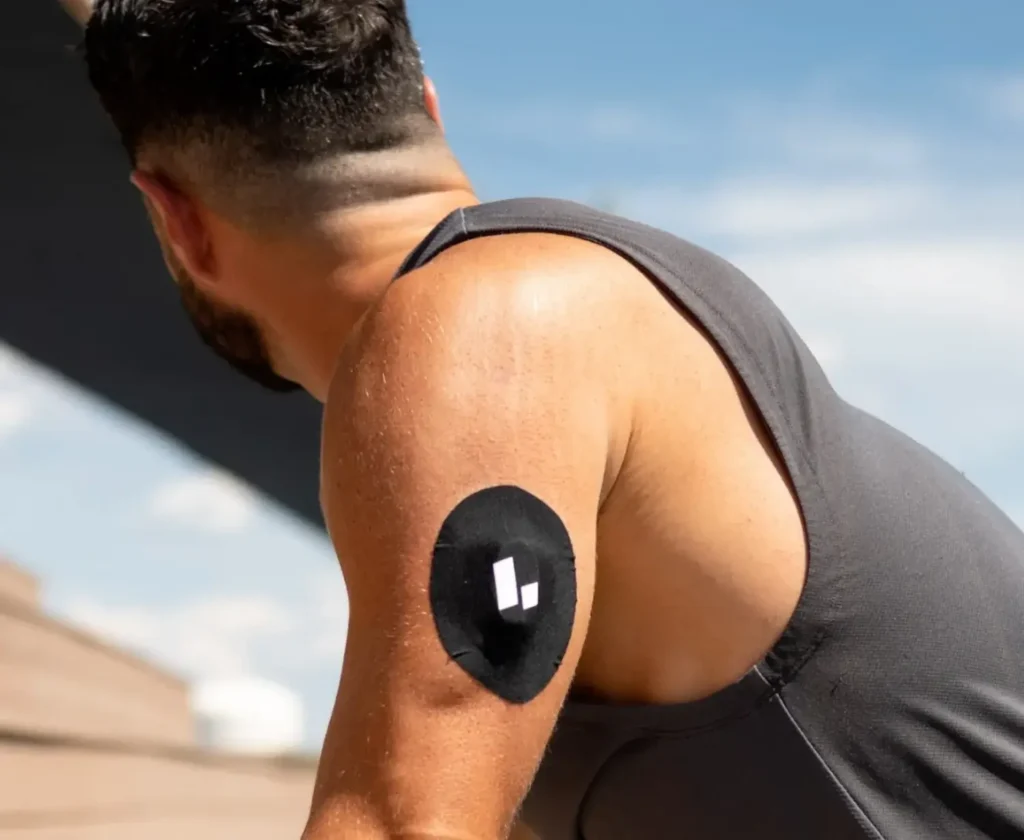Exercise gets harder when you have diabetes, whether you are walking the dog or running a marathon. But with the advent of continuous glucose monitors (CGMs), blood-sugar regulation during exercise is now simpler than ever.
Let’s look at how Continuous Glucose Monitors (CGMs) facilitate exercise for diabetics.
CGMs: What are the Essentials?
Continuous Glucose Monitors (CGMs) are tiny devices that continuously monitor blood sugar levels; they are usually worn on the stomach or arm.
Most CGMs include:
- A sensor, located beneath the skin
- A transceiver, situated subdermally and
- The recipient is typically an insulin pump or a smartphone.
Your blood sugar levels are updated in real time with the help of continuous glucose monitors (CGMs), which measure the quantity of sugar in the interstitial fluid of body fat and transmit that information to a receiver.
Additionally, the data displays arrows that illustrate whether your blood sugar levels are rising, falling, or remaining the same.
Having this knowledge helps manage diabetes, but it’s especially important when working out.
What Benefits do Continuous Glucose Monitors (CGMs) Offer for Exercise?
Here are a few advantages of using a CGM when exercising. You should speak with your physician or Certified Care and Education Specialist about these advantages.
Achieved Expertise
- Athletes can better understand how exercise affects their blood sugar levels when they have access to data.
- Athletes can modify their diet and workout regimens to maintain ideal blood-sugar levels by monitoring these patterns.
- This improves performance and enables individuals to make knowledgeable judgments about how their type of exercise affects their blood sugar levels.
Hypoglycemia and Hyperglycemia Alerts are Provided
- An athlete’s performance and general health might be negatively impacted by abrupt decreases in blood sugar (hypoglycemia) or spikes in blood sugar (hyperglycemia).
- When these situations are detected, Continuous Glucose Monitors (CGMs) send out alarms that enable prompt treatments to stabilize blood sugar levels.
Assisting in Personalizing Nutrition
Fede Fontana is a co-founder of Enhance-d and holds a PhD in exercise physiology. Fontana asserts that diet is one of the most important methods for controlling blood sugar levels in connection to exercise.
According to Fontana, you should be aware of how much sugar you should eat in your exercise regimen, taking into account both the duration and intensity of your workout. Based on your CGM data, the activity’s intensity, and the length of your workouts, you would modify them.
In terms of nutrition, you can also experiment with the following variables:
- Experimenting with various diet regimens
- Figuring out how the ratio of protein, fat, and carbohydrates affects blood sugar levels
- Exercising at various intervals (immediately, an hour later, etc.) following meals
- Exercising first thing in the morning while fasting
Supports Aid in Managing Recovery
- After exercise, blood-sugar monitoring is essential for recovery.
- With the aid of Continuous Glucose Monitors (CGMs), athletes can guarantee that their blood sugar levels return to normal,
- Facilitating efficient recuperation and readying them for the next session.
Where, During Exercises, To Have Your Blood Sugar Levels
- Most people like to start exercising when their blood sugar levels are within or just a little bit above their recommended range, according to Fontana.
- Fontana suggests that you start exercising when your blood sugar is at a safe level and try to keep it there by consuming carbohydrates.
- Fontana requires the athletes he works with to use a blood glucose meter to check their blood sugar levels and ensure that their CGMs are accurate.
- Make sure you and your doctor talk about the proper blood-sugar levels for your level of exercise.
CGM Technology Integration
Many insulin pumps, notably the Tandem t:slim X2 insulin pump and the Apple Watch, can be linked with CGMs, including the Dexcom G7.
This enables those who have diabetes to
- Take pleasure in spending more time in the range
- Recognize hypoglycemia up to twenty minutes in advance and
- Adapt the parameters according to the insulin required.
- Additionally, the Dexcom G7 pairs with SNAQ, Sugarmate, Happy Bob, eddii, and Glooko health apps.
CGMS’s Impact on Competitive Sports
- Most sports do not prohibit CGM use, particularly in cases when it is medically required, as in the case of athletes with diabetes.
- To use Continuous Glucose Monitors (CGMs) during competition, these athletes can usually seek a therapeutic use exemption. By doing this, they may securely maintain their condition while participating.
- However, athletes should be informed of any modifications to rules made by the body that oversees their sport.
Explore More Regulating Continuous Glucose Monitors: Non-Diabetic Concerns
Additional Athletes Using CGMs Tips
- Make sure the CGM sensor is positioned exactly as the manufacturer specifies.
- Accurate readings and comfort throughout activities are ensured by proper placement.
Adjust your device. - Periodic calibration of certain Continuous Glucose Monitors (CGMs) using a conventional blood glucose meter is necessary.
- To preserve accuracy, make sure you adhere to the calibration plan.
- Observe Patterns, Not Just Figures
- Blood sugar measurements taken in real-time are useful, but observing trends and patterns over time will give you a better idea of how your body reacts to different stimuli.
Link CGM Information to Other Metrics
- Integrate CGM data with exercise intensity, heart rate, and sleep patterns, among other performance variables.
- Making better-informed judgments about nutrition and training is facilitated by this method.
Remain Hydrated
- Dehydration can have an impact on blood sugar levels.
- To keep your CGM readings accurate, make sure you drink plenty of water, especially during vigorous exercise.
Ask Your Doctor About What Sets Right
Consulting endocrinologists and nutritionists regularly can help you make the required changes to your regimen and efficiently analyse CGM data.


